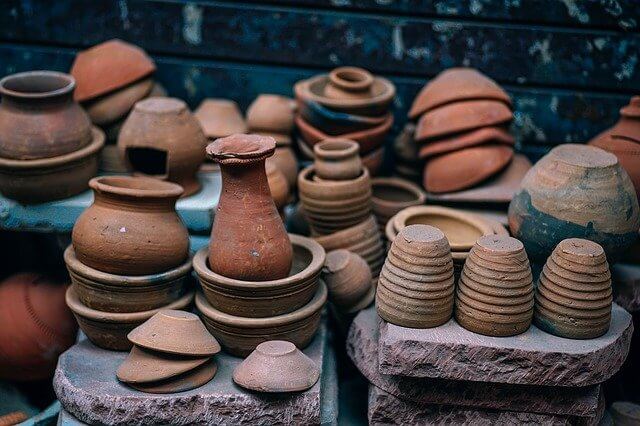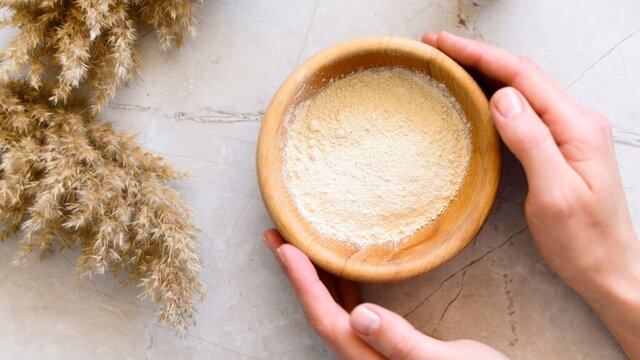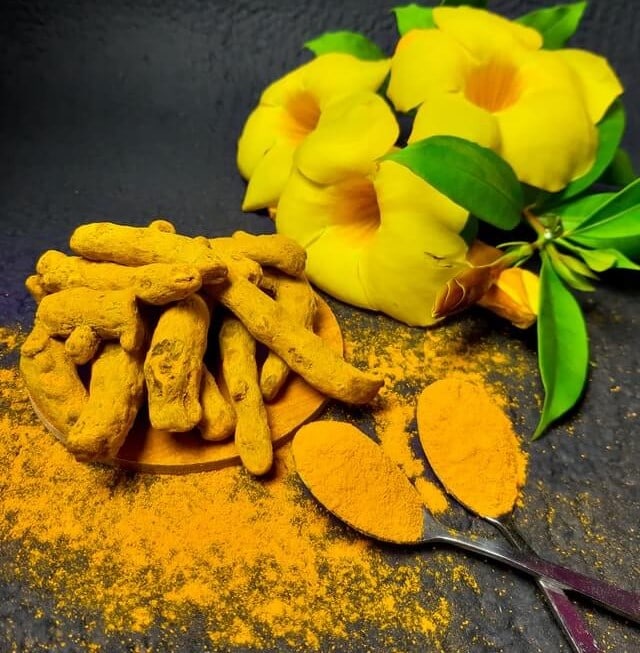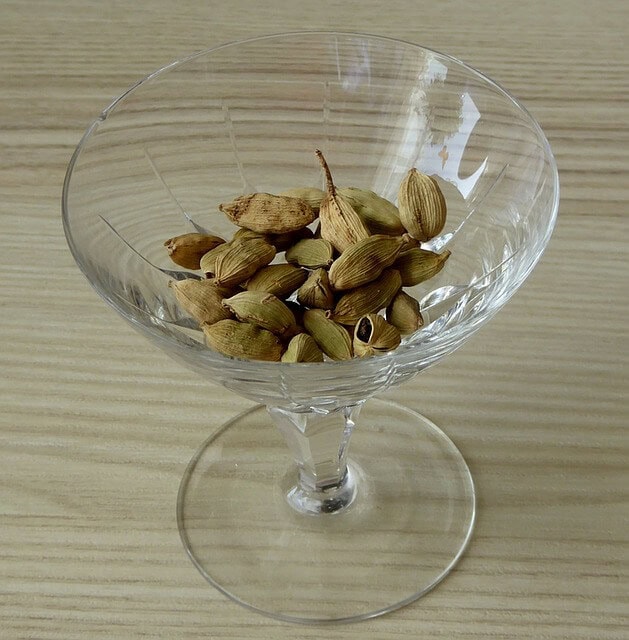
Tontöpfe sind voll von Vorteilen, die auch von Ayurveda sehr empfohlen wird. In diesem Blog finden Sie alle Informationen, die Sie über Lehm-Kochgeschirr wünschen.
Das Leben in einer modernen Welt, in der sich alles im Sekundentakt verändert, ist eine Herausforderung. Wir wollen mit der Welt Schritt halten und wünschen uns schnelle Lösungen für alltägliche Probleme. Als Menschen passen wir uns auch sehr schnell an die Welt um uns herum an.
Doch bei dieser Schnelllebigkeit vergessen wir, dass unsere täglichen Entscheidungen unsere Gegenwart und Zukunft prägen. Ob im Privat- oder im Berufsleben, jeder Schritt, den wir tun, wirkt sich auf uns und die Menschen um uns herum aus. Wir haben es eilig, nirgendwohin zu kommen, und setzen dabei viel aufs Spiel: Wir hetzen ständig von einer Aufgabe zur nächsten, lassen Mahlzeiten aus, drücken uns vor Terminen... die Liste geht weiter. Wir rasen nur noch durch die Wochentage und verschnaufen am Wochenende. Aber wir müssen langsamer werden und überlegen, was wir eigentlich verlieren? Ja, die Antwort ist ganz einfach: GESUNDHEIT!
Was nützt uns das alles, wenn wir am Ende nicht gesund genug sind, um das Leben zu genießen?
Unsere Gesundheit liegt in unserer Hand. Die gesunden Entscheidungen, die wir Tag für Tag treffen, werden sich am Ende auszahlen. Wir versuchen, uns gesund zu ernähren. Wir versuchen zum Beispiel, gesundes Obst, Gemüse, Vollkornprodukte, proteinreiche Milchprodukte, Bioprodukte usw. zu kaufen. Wir kaufen sie bewusst, um einen Schritt in Richtung gesünderes Leben zu machen, und kochen sie später nach unserem Lieblingsrezept und genießen sie am Ende. Aber machen wir es auch richtig? Haben wir richtig gekocht? Haben wir sie zu viel Hitze ausgesetzt und die Nährstoffe abgetötet? Oder haben wir sie nur halb gekocht und damit unser Verdauungssystem belastet.
Ayurveda auf Tontöpfen
Mit dem Fortschritt in der Welt erkennen die Menschen den Wert der traditionellen Lebensweise und die Bedeutung von Ayurveda. Auch das Kochgeschirr, das wir zum Kochen verwenden, spielt eine wichtige Rolle. Laut Ayurveda können die zum Kochen verwendeten Utensilien die Gesundheit einer Person beeinflussen. Jedes Kochgeschirr hat seine eigenen Vorzüge und Nachteile. Obwohl die heutigen Kochutensilien praktisch und gut leitend sind und sehr gut zu unserem schnellen Leben passen, empfiehlt Ayurveda sie nicht, da es der Meinung ist, dass sie zu viel Hitze in unsere Nahrung einbringen und die Nährstoffe extremen Temperaturen aussetzen. Dadurch verringert sich der Nährwert unserer Nahrung.
Ayurveda empfiehlt Utensilien aus Kupfer, Bronze, Messing und Ton. Sie alle haben die Eigenschaft, den Nährwert der Nahrung zu bewahren. Ich persönlich liebe die Utensilien aus Ton. Sie eignen sich hervorragend zum Kochen, Aufbewahren und Dekorieren und sind sogar gut für die Umwelt. Außerdem verleihen sie den Rezepten ein erdiges Aroma, das sie so lecker macht. Deshalb ist dieser Blog ganz und gar dem gewidmet, was Sie über Tonutensilien wissen müssen.
Was ist Ton?
Ton ist eine besondere Art von Erde, die durch die Zersetzung von Gestein durch Verwitterung entsteht. Es gibt drei Arten von Ton: Steingut, Steinzeug und Kaolin (Porzellanerde). Steingut ist eine gängige Tonart, die viele Mineralien enthält und seit der Antike verwendet wird. Sie sind von Natur aus porös und benötigen eine niedrige Temperatur zum Brennen. Das Endprodukt kann eine satte rote, orange oder braune Farbe haben. Steinzeugton ist strapazierfähiger und erfordert höhere Brenntemperaturen. Kaolin-Ton, auch weißer Ton genannt, wird zur Herstellung von Porzellan verwendet.
Wir werden hier im Detail über Steingut sprechen.
Unglasierter versus glasierter Tontopf
Alle unsere Produkte werden aus veredeltem Steingut hergestellt und sind unglasiert. Auf dem Markt werden die Produkte aus dieser Art von Ton entweder unglasiert oder glasiert angeboten.
Da Steingut von Natur aus porös ist, wird es glasiert, um diese Poren zu schließen und es wasserdicht zu machen. Durch die Glasur wird es auch funktioneller und lässt sich leichter reinigen. Sie können die Glasur erkennen, wenn das Geschirr glatt ist und glänzt.
Aber was ist Verglasung und ist sie sicher?
Jede Glasur besteht aus Kieselerde, Tonerde und Flussmittel sowie Zusatzstoffen wie Farben, Bentonit, Titan, Zink usw. Obwohl die Bestandteile von Glasuren heutzutage reguliert sind, enthalten viele immer noch schädliche Chemikalien wie Blei, Quecksilber und viele andere, die gesundheitsgefährdend sein können. Man kann sie auch nicht einfach durch Anschauen erkennen. Deshalb ist es sicherer, sich für unglasierte und reine Tontöpfe zu entscheiden.
Warum riecht der Ton und wie wird man ihn los?
Der für die Herstellung dieser Töpferwaren verwendete Ton ist ein natürlicher regionaler Ton. Diese Tone tragen alle Mineralien, Gesteine und die Auswirkungen der Witterungsbedingungen auf den Ton über große Zeiträume hinweg.
Der Ton der einen Region kann anders riechen als der der anderen. So kann ein mexikanischer Tontopf einen milden Geruch haben, während ein indischer Tontopf einen starken Tongeruch aufweist. Der Geruch von Ton kommt von den verschiedenen organischen Verbindungen, die auf dem Ton leben. Diese Verbindungen reichern sich in der Atmosphäre und auf den Oberflächen an. Wenn sie mit Wasser vermischt werden, verbreiten sie einen aromatischen Geruch, ähnlich dem Geruch von Erde nach Regen. Zu den Verbindungen gehören auch Bakterien namens "Geosmin". Es ist für den erdigen Geruch und Geschmack des Tons verantwortlich. Es verleiht der Tonerde stets ein angenehmes und beruhigendes Aroma.
Jetzt wissen Sie also, warum Ihr Tontopf riecht. Viele empfinden diesen Geruch als wohltuend und aromatisch, andere sind vielleicht überrascht von diesem Geruch. Wenn Sie ihn einmal benutzt haben, werden Sie sich mit der Zeit daran gewöhnen. Außerdem lässt der Geruch bei häufigem Gebrauch der Tontöpfe nach. Wenn Sie den Geruch dennoch nicht ertragen können, können Sie ihn öfters würzen. Vor allem, wenn Sie die Tontöpfe eine Zeit lang nicht benutzt haben, können Sie sie vor dem Gebrauch würzen. Der Prozess des Würzens ist unten beschrieben.
Vorteile des Kochens in Tontöpfen
Ayurveda empfiehlt das Kochen im Tontopf aufgrund seiner zahlreichen gesundheitlichen Vorteile.
- Lehm enthält viele wichtige Nährstoffe und Vitamine wie B12, Kalzium, Phosphor, Eisen, Magnesium und Schwefel und fügt sie beim Kochen oder Lagern Ihren Speisen und Getränken hinzu. Diese Nährstoffe sind sehr nützlich für Ihren Körper.
- Lehm ist von Natur aus alkalisch. Daher wirkt sie als natürliches Entgiftungsmittel und neutralisiert den Säuregehalt in Ihrer Nahrung oder Ihrem Wasser. Dies hilft bei der Verdauung.
- Lehm ist von Natur aus porös. Daher kann sowohl viel Feuchtigkeit als auch Wärme durch die Lebensmittel zirkulieren. Das bedeutet, dass man mit weniger Öl und Fett kochen kann und trotzdem schmackhafte und gesunde Speisen erhält. Außerdem bleiben die Nährstoffe in den Lebensmitteln erhalten, die bei anderen Kochutensilien normalerweise verloren gehen.
- Das Wiederaufwärmen kann zu Nährstoffverlusten führen, ist aber bei Tontöpfen nicht erforderlich, da der Tontopf die Temperatur auch nach dem Garen noch lange Zeit beibehält.
- Das Aufkochen von Milch oder die Herstellung von Quark in Tontöpfen führt zu einem besseren Geschmack und einer besseren Textur als in Metallgefäßen, da Ton von Natur aus porös ist und überschüssiges Wasser absorbiert.
- Im Sommer können Sie Wasser in Tontöpfen aufbewahren. Das Wasser bleibt kühl, da Tontöpfe von Natur aus hitzebeständig sind. Im Winter können Sie Lebensmittel in diesen Tontöpfen aufbewahren, um die Wärme der Lebensmittel zu erhalten.
- Metalltöpfe setzen als Reaktion auf Hitze manchmal schädliche Chemikalien frei. Diese beeinträchtigen allmählich Ihre Gesundheit. Steingut ist jedoch ungiftig und beugt Vergiftungen oder ähnlichen Krankheiten vor.
- Unglasierte Tontöpfe sind nicht nur vorteilhaft für Sie und Ihre Lebensmittel, sondern auch sehr umweltfreundlich. Da sie im Grunde aus dem Boden stammen, können sie direkt wieder abgebaut werden. Sie sind vollständig biologisch abbaubar, im Gegensatz zu Teflon- und Stahlgeschirr, das ordnungsgemäß entsorgt werden muss und viel Platz braucht.
Wie pflegt man Tongefäße?
Wenn Sie einen Tontopf kaufen, vor allem die unglasierten, ist es wichtig, ihn vor der Verwendung vorzubereiten. Dies nennt man "Würzen". Wenn Sie den Tontopf mindestens einen Tag lang in Wasser einweichen, werden die Poren der inneren Oberfläche befeuchtet, so dass die Speisen beim Kochen dampfen können und nicht austrocknen. Durch das Würzen wird die Oberfläche gestärkt und Rissen vorgebeugt, so dass der Topf über einen langen Zeitraum hinweg haltbar ist. Es gibt viele Möglichkeiten, Tontöpfe zu würzen und auch zu testen, ob das Würzen erfolgreich war.
Seasoning:
Source: Kochdichindisch
Wenn Sie Ihre Töpfe zum ersten Mal würzen und dann regelmäßig von Zeit zu Zeit würzen, bleiben sie hygienisch und halten länger.
- Wenn Sie einen neuen unglasierten Tontopf erhalten, weichen Sie ihn vollständig in normal temperiertem Wasser ein.
- Lassen Sie es mindestens einen Tag lang unberührt stehen. Sie werden feststellen, dass das Wasser sickert und Blasen aufsteigen. Das ist normal und zeigt nur, dass der Ton porös ist.
- Nehmen Sie es aus dem Wasser und reinigen Sie es einmal mit frischem Wasser. Trocknen Sie ihn dann mit einem Handtuch innen und außen ab.
- Reiben Sie die Innen- und Außenseite des Topfes mit Speiseöl (Ghee, Kokosnussöl, Sesamöl, Olivenöl usw.) ein. Durch die Wärme Ihrer Hände wird das Öl besser in den Ton aufgenommen.
- Lassen Sie es an der Luft vollständig trocknen. Sobald das Öl vollständig aufgesaugt ist, ist es einsatzbereit.
Um die Würzung zu testen, füllen Sie den Topf mit abgemessenem Wasser und lassen Sie ihn einige Stunden lang stehen. Prüfen Sie nun, ob der Wasserstand gleich bleibt. Wenn ja, ist die Würzung erfolgreich. Wenn nein, würzen Sie erneut.
Note: Für andere Tonutensilien wie Gläser, Flaschen, Wasserspender usw. weichen Sie die Utensilien einen Tag lang in dem Wasser ein und lassen Sie sie später an der Luft trocknen.
Eine weitere Methode zum Würzen ist die Verwendung von Reiswasser anstelle von normalem Wasser.
- Waschen Sie den Tontopf mit klarem Wasser. Lassen Sie sie trocknen.
- In einem separaten Topf 3 Tassen Wasser zum Kochen bringen.
- Reis unter fließendem Wasser waschen. Den Reis abseihen und 10 Minuten lang in kochendes Wasser geben oder bis der Reis gar ist.
- Den Reis abseihen und das Reiswasser auffangen. Normales Wasser hinzufügen, um die Menge zu erhöhen.
- Füllen Sie die Tontöpfe mit Reiswasser und bewahren Sie sie einen Tag lang auf.
- Am nächsten Tag schütten Sie das Reiswasser aus und schrubben die Töpfe mit einem weichen Schwamm und reinigen sie unter fließendem Wasser.
- Tragen Sie nach dem Trocknen der Töpfe mit der Hand Speiseöl auf die Innen- und Außenseite des Topfes auf. Durch die Wärme der Hände kann das Öl besser in den Ton einziehen.
- Lassen Sie es an der Luft vollständig trocknen. Sobald das Öl vollständig aufgesaugt ist, ist es einsatzbereit.
Reinigung:
Tontöpfe halten nur dann lange, wenn sie mit dem gebührenden Respekt behandelt werden. Mit der richtigen Würze und regelmäßiger Pflege halten sie über Generationen. Da Tontöpfe von Natur aus porös sind, sollten Sie niemals Seife zur Reinigung verwenden, da das Seifenwasser vom Ton aufgesaugt wird und sich dann mit den Lebensmitteln vermischt. Sie können Backpulver oder Mehl verwenden, um den Topf zu reinigen. Zum Schrubben verwenden Sie einen Schwamm oder einen Kokosnussschrubber. Zur regelmäßigen Pflege kochen Sie einmal pro Woche Wasser im Topf, um Öl und Flecken zu entfernen. Das stärkt auch die Hygiene des Kochgeschirrs.

Pflege:
- Erhitzen Sie niemals einen leeren Topf.
- Eine Überhitzung des Topfes kann zu Rissen führen, daher ist es besser, beim Kochen eine niedrige bis mittlere Flamme beizubehalten.
- Bitte vermeiden Sie es, die Tontöpfe plötzlicher Hitze auszusetzen, da sie sonst reißen oder brechen könnten.
- Halten Sie die Flamme immer auf niedriger Stufe. Erhöhen Sie die Temperatur im Laufe der Zeit allmählich. Wenn das Gefäß heiß ist, kein kaltes Wasser nachgießen, sondern die Temperatur des Gefäßes auf Normaltemperatur abkühlen lassen und dann waschen.
- Diese Töpfe sind porös, lassen Sie also keine Flüssigkeit für längere Zeit darin stehen.
- Bei Verwendung im Backofen muss der Ofen nicht vorgeheizt werden. Stattdessen stellen Sie den Tontopf in einen kalten Ofen und lassen die Temperatur langsam ansteigen.
- Sollte Ihr Lehmtopf in einer hohen Flamme verbrennen, empfehlen wir, den Tontopf zu entsorgen und einen neuen zu kaufen, da der gleiche Geruch bei allen zukünftigen Gerichten, die Sie mit demselben Topf zubereiten, anhält.
Was tun, wenn man Schimmel/Pilze auf den Tontöpfen hat?
Werden Sie es in nur 2 Tagen los.
1. Tag: Nehmen Sie heißes Wasser (3/4 der Größe des Tontopfes, damit es nicht überläuft) in ein großes Gefäß und fügen Sie 1 Teelöffel Backpulver pro 1 Liter Wasser hinzu. Stellen Sie den Tontopf in das heiße Wasser, damit das Wasser nicht das Innere des Topfes füllt. Füllen Sie nun heißes Wasser in das Innere des Topfes. Sobald du das heiße Wasser hinzugibst, sinkt der Topf und füllt sich zu 1/4 mit dem äußeren Teil des Topfes. Geben Sie erneut 1 Teelöffel Backpulver in den Topf und weitere 2 Teelöffel auf die Außenseite des Topfes. 3 Stunden lang stehen lassen.
Nehmen Sie nun den Topf aus dem Wasser und entsorgen Sie das Wasser. Stellen Sie eine Paste aus Backpulver und Wasser im gleichen Verhältnis her. Tragen Sie die Paste auf alle Seiten auf (innen und außen). Lassen Sie sie eine halbe Stunde einwirken. Achte darauf, dass der Boden nicht den Boden berührt. Stellen Sie ihn auf einen Ständer, um ihn zu erhöhen. Nach 30 Minuten waschen Sie ihn gründlich mit klarem Wasser ab und trocknen ihn in der Sonne.
2. Tag: Nach dem Trocknen ist der Schimmel verschwunden, aber das Backpulver bleibt in den Poren des Topfes. Kochen Sie am nächsten Tag einfach wieder Wasser darin auf. Sie werden sehen, wie das Backpulver aus den Poren des Wassers austritt. Waschen Sie den Topf sofort nach dem Kochen mit frischem Wasser aus. Trocknen Sie ihn, wenn Sie ihn nicht benutzen.
Aufbewahrung von Tontöpfen
Vergewissern Sie sich, dass der Topf nach dem Waschen gut getrocknet ist, bevor Sie ihn aufbewahren. Lagern Sie den Tontopf mit abgenommenem Deckel, damit die Luft zirkulieren kann. Oder drehen Sie den Deckel um und legen Sie ein Papiertuch zwischen Topf und Deckel, um ein Absplittern zu verhindern. Lagern Sie Ihr Steingut in trockenen und gut belüfteten Räumen. Dadurch wird das Risiko der Schimmelbildung im Inneren des Topfes vermieden.



















